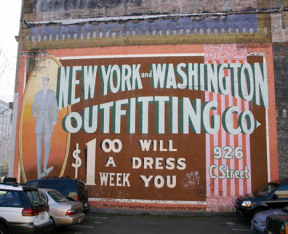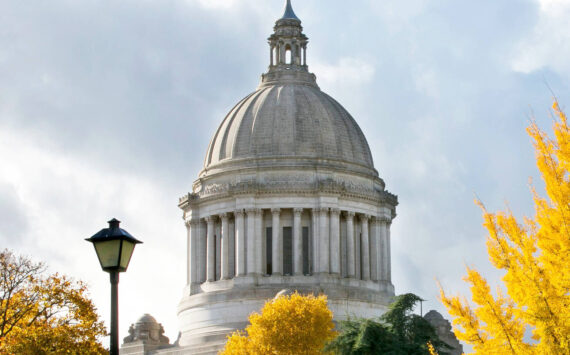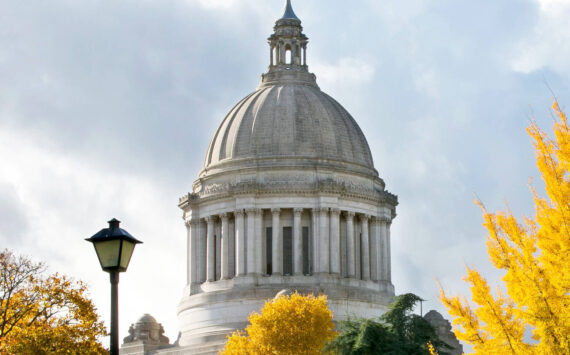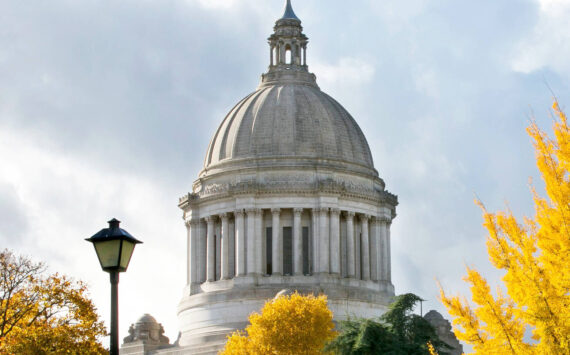They appear like specters on the downtown skyline. If you’re driving into the city on I-705, they dot the so-called brewery district like old scars, offering products no longer for sale: Alt Heidelberg beer . . . Slumberite mattresses . . . 5-cent cigars.
Some are as tall and wide as home-theater screens, while others occupy the sides of entire buildings.
Some are as worn and faded as old coins, while others are beautifully restored.
And some are vibrant and colorful, while others thinly cling to century-old masonry.
What are they?
According to preservationists, these elaborate wall-paintings, which are found in most large cities throughout the United States, are known as ghost murals.
“It’s almost like an arm of archeology,” says the City of Tacomas Historic Preservation Officer Reuben McKnight. ”There’s a real environmental component — an urban, environmental aesthetic to having these things. It’s not just nostalgia. When you have these reminders from the past, they kind of start to take an artistic space as a part of your cultural environment.”
“They’re kind of a contrast between today’s information society, where things change so quickly and we are so bombarded with ads,” says Brian Kamens of the Northwest Room & Special Collections section of the Tacoma Public Library. “These are a stabilizing force.”
As Tacoma cycles through its current redevelopment boom, city officials have given nods to some key historic markers. The Albers Mill (built in 1904), Perkins (built in 1906), and Hunt & Mottet buildings (built in 1907) were refurbished rather than razed, and now serve as urban residences (minus Hunt & Mottet, which will open this spring).
It’s the same story for ghost murals — particularly in the aged Union Station District. According to the district’s Master Plan, existing historic wall signs must be restored or preserved in place [and] new wall signs shall generally be discouraged. This rule is evidenced by the area’s landmark occupant — the University of Washington Tacoma, which turned a collection of abandoned, turn-of-the-century warehouses into an inviting campus. Many of the university’s buildings boast these historic ghost murals.
”The signs on the buildings in that district are protected,” says McKnight. “If they clean the side of a building, they have to do it delicately and try to preserve whats left of the design.”
According to Michael J. Auer, a preservation expert with the National Park Service, these faded signs are rich in history. “[They] often become so important to a community that they are valued long after their role as commercial markers has ceased,” writes Auer, in a historic preservation brief prepared for the National Park Service. ”Signs transcend their conventional role as vehicles of information, as identifiers of something else. When signs reach this stage, they accumulate rich layers of meaning. They no longer merely advertise, but are valued in and of themselves. They become icons.”
Most of Tacoma’s ghost murals date between 1900 and the 1940s. Their sizes, colors, and catchy slogans point to the primary turn-of-the-century mass transit: the streetcar.
”Keep in mind that billboards and that kind of advertising were the functions of streetcars, carriages, and automobiles,” says McKnight. ”Slow-moving streetcars meant there were these big signs on the sides of buildings.”
What do these murals tell us about the city’s economic history?
First, they describe the economies that existed over the years downtown. “It’s not just products,” explains McKnight. “In a maritime city like Tacoma, there could be murals for ship handleries that are no longer in business.”
Second, the murals posthumously explain the characteristic of a certain area of the city. The Alt Heidelberg mural is a good example. ”This was the warehouse district,” says McKnight. “It was probably a male labor market, and guys were working down there loading and unloading the trains that came in. So [it makes sense to] have an advertisement for beer.”
Third, varying conditions of the murals can say a lot about the city’s architectural history. A mural missing its top section might mean that an earthquake destroyed the building’s upper floors. In some instances, marks of earlier buildings scar some of the murals, providing evidence that a building once existed on a site, but was razed — providing a clean canvas for a ghost mural. And in other instances, the top section of a mural might be faded by the elements, but the lower section is in good shape, protected by a smaller building constructed after the mural was painted.
“I think Tacoma has a nice collection of these signs,” says McKnight. “One of the things I like about them is that they’re sort of something that everybody gets. They resonate with people. A lot of it might be related to the popularity of advertising art. From a development perspective, it’ssort of like peeling back layers of an onion or looking at tree rings — you can see the marks of the years as they went by.”


Todd Matthews is editor of the Tacoma Daily Index and recipient of an award for Outstanding Achievement in Media from the Washington State Department of Archaeology and Historic Preservation for his work covering historic preservation in Tacoma and Pierce County. He has earned four awards from the Society of Professional Journalists, including first-place honors for his feature article about Seattle’s bike messengers; second-place honors for his feature article about whistle-blowers in Washington State; third-place honors for his feature article about the University of Washington’s Innocence Project; and third-place honors for his feature interview with Prison Legal News founder Paul Wright. His work has appeared in All About Jazz, City Arts Tacoma, Earshot Jazz, Homeland Security Today, Jazz Steps, Journal of the San Juans, Lynnwood-Mountlake Terrace Enterprise, Prison Legal News, Rain Taxi, Real Change, Seattle Business Monthly, Seattle magazine, Tablet, Washington CEO, Washington Law & Politics, and Washington Free Press. He is a graduate of the University of Washington and holds a bachelor’s degree in communications. His journalism is collected online at wahmee.com.








